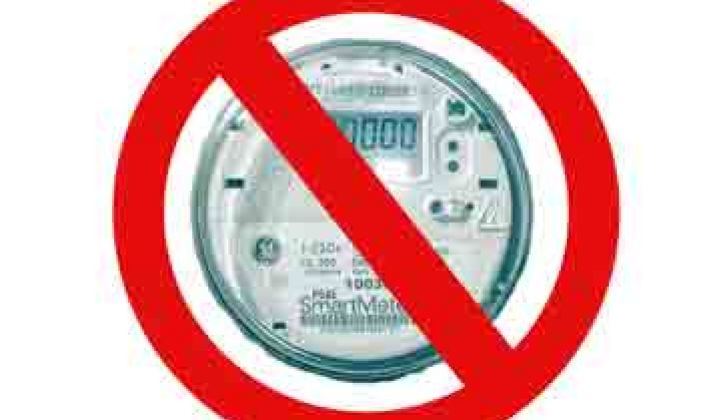In response to concerns about the health effects of smart meters, the Santa Cruz County Board of Supervisors voted unanimously last Tuesday to impose a moratorium on meter installation through 2011, according to the San Jose Mercury News.
The smart meters were already on hold, but the original moratorium expired at the end of 2010. The board said it was waiting for a report on health effects, which was released later that same day.
The concern over health effects, specifically electromagnetic field radiation, is not limited to Santa Cruz. Residents in Maine and other parts of California have expressed similar concern, but the report issued by the California Council on Science and Technology concluded that “Wireless smart meters, when installed and properly maintained, result in much smaller levels of radio frequency exposure than many existing common household electronic devices, particularly cell phones and microwave ovens.”
Other studies have had similar findings that the smart meters are well within the Federal Communications Commission standards.
Despite the study’s findings, Santa Cruz plans to uphold the moratorium. Legally, if Pacific Gas and Electric continues to install meters, it will be a misdemeanor, if it is cited at all.
However, outraged people, even a few of them, can make a lot of noise. Even if science does not back their claims, there needs to be serious acknowledgement of their concerns, and even potentially an opt-out clause, for utilities that are looking for smooth smart grid upgrades.
Elsewhere:
-- One of the biggest players in demand response is joining one of the emerging game changers. EnerNOC has joined the OpenADR Alliance, a nonprofit industry group that will push for the adoption and compliance of an open automated demand response standard across the country. EnerNOC already provides some automated demand response, although there are other firms that are solely based on the OpenADR platform. EnerNOC is joining the alliance because “Standards like OpenADR assist EnerNOC by creating consistent messaging and communications protocols, driving down implementation costs, improving the scalability of the demand response network, and helping customers maximize participation,” the company said in a statement. The current push by the OpenADR Alliance is to get the standard adopted beyond its home in California. That’s a goal that would certainly help EnerNOC, which acquired Global Energy Partners in December -- one of the companies that worked with Laurence Berkley National Laboratory to develop the standards.
--The U.S. Department of Energy has selected building products manufacturer Saint-Gobain to join its Energy's U.S.-China Clean Energy Research Center for Building Energy Efficiency. One of three CERCs in the U.S., the center will be charged with advancing energy efficiency both here and in China. It will be led by Lawrence Berkley National Laboratory and include industry partners such as Saint-Gobain and other research labs, including Oak Ridge National Laboratory. "As the leader in sustainable habitat, Saint-Gobain is wholeheartedly committed to inventing solutions to help professionals and communities around the world build and renovate comfortable, healthy, cost-efficient and durable buildings,” Gilles Colas, President and CEO of Saint-Gobain in North America, said in a statement.
The company will collaborate with the lab by sharing building science expertise, providing technical support, access to its research facilities, supply materials and more. The first areas of focus on cool roofs and installation materials, while glass façade systems, solar integration and energy efficiency data monitoring are all being considered as other research projects. The results of the project could lead to huge gains for both countries. Chinese utilities have been told to cut energy use by 0.3 percent a year through gains in efficiency, while California utilities are being encouraged to slash 1.5 percent a year. There is no end to the market in cost-effective solutions, and no end to the competition in the market. Johnson Controls was just awarded an “Energy Saving Service Institution Record Certificate” that qualifies it to provide comprehensive building efficiency services in China and other big players like Schneider Electric and Honeywell are surely gunning for a piece of the Chinese market on top of U.S. market share.
-- Coulomb Technologies has announced that Chevrolet will offer its ChargePoint electric vehicle charging stations at hundreds of dealerships across the U.S. The company is already delivering nearly 5,000 electric vehicle charging stations in home and public places as part of the Department of Energy’s ChargePoint America program. The stations will be delivered and installed by SPX Corporation, Chevrolet’s home charging installation partner. For any stations looking to sell a Volt, or at least showcase the car, having a of Level II 240V charging station is certainly necessary. This is better news than charging stations to showing at locations such as McDonald’s, where Level II charging would mean you’d need to hang out for a while if your car is near empty. For Volts, and other EVs to get into the mainstream, it would help if dealerships had cars for people to at least test drive. After all, once drivers get a feel for the zippy electric engines, it the decision just comes down to color anyway.



